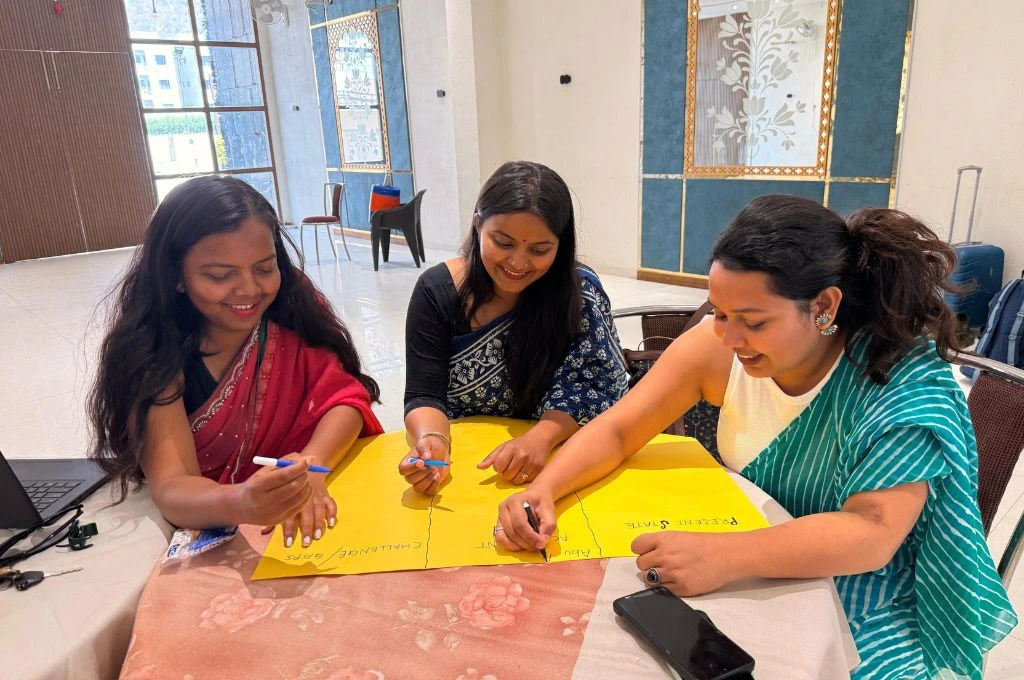The United Nations (U.N) General Assembly adopted a resolution on September 2, 2022 condemning all forms of sexual and gender-based violence. The resolution, co-sponsored by Sierra Leone and Japan, was adopted by consensus. While this resolution is non-binding on U.N. member states, it reflects a growing recognition of the profound consequences of gender-based violence (GBV) on emotional, financial and social well-being.
But is GBV a problem only for the U.N. and other global development organizations to tackle? We think not. Beyond its personal and social implications, gender-based violence has economic effects. We therefore see an important role for investors to play when it comes to preventing and mitigating GBV.
The economic impact of gender-based violence
It is important to note that the term gender refers to the social and cultural roles assigned to men and women, while sex refers to the biological differences between men and women. Gender-based violence, therefore, is violence that targets a person because of the gender that person is perceived to be. GBV can take many forms, including domestic violence, sexual harassment and sexual assault.
While the evidence from numerous studies is clear, the impact of GBV on economic growth is not always well understood. In many cases, this is because the formal and informal costs of GBV are not included when measuring gross domestic product (GDP), making GBV a hidden contributor to lower economic growth. In addition, the effect of gender-based violence on GDP is difficult to isolate due to its overlap with other factors, such as infrastructure, employment and education.
However, efforts have been made to quantify the economic impact of GBV, with the U.N. estimating its global cost as approximately $1.5 trillion each year, equivalent to 2% of global GDP—larger than the economy of Mexico. And it’s clear that the negative physical, mental and emotional impacts of GBV drastically impact not only women’s ability to participate in society and strengthen their households, but also their involvement in the workforce. In the U.S. alone, domestic violence leads to a loss of over 7.9 million paid workdays each year. A stakeholder we interviewed as part of a project assessing GBV as an investment risk shared that workplace harassment at businesses in Bangladesh’s garment industry sometimes led to employee turnover rates that exceeded 100%.

Unfortunately, despite the damage that gender-based violence does to businesses and entire economies, many businesses directly and indirectly contribute to GBV or miss opportunities to address it, particularly in developing countries that do not have laws protecting against it. It’s possible that this failure to reduce and respond to GBV is responsible for much of the difference in economic opportunities between men and women. A report from the International Labour Organization found that all forms of violence—physical, sexual, verbal and emotional—have negative impacts on labor supply, productivity, health and education. But while the impact on productivity seems clear, the relationship between violence and labor supply is not as intuitive, because women may seem to have the option of leaving an abusive work environment. However, women’s ability to quit an abusive job often depends on how many resources they have—e.g., additional income, savings and skills—and what other opportunities are available/they have access to. This suggests that poverty and the social constructs that perpetuate it also contribute to GBV’s impact on the economy—though it’s important to recognize that GBV happens in both low- and high-income settings.
The impact of investment decisions on GBV
The vicious cycle of GBV is something that investment decisions can directly perpetuate: For instance, the World Bank had to halt support for an infrastructure project in Uganda due to increased reports of sexual violence against women attributed to the influx of construction workers. In the energy sector, mining and extraction projects pose similar challenges – and the same is true in the retail sector.
Unlike many areas of ESG investing, GBV research and data do exist.
But GBV can also be perpetuated more indirectly in the investing process. Historically, GBV has not been included in the universe of environmental, social and governance (ESG) factors – even when it comes to social factors, where GBV would seem to be a natural fit. This is unfortunate, since social factors already tend to receive much less attention than their ESG counterparts, even though all three pieces of ESG investing are interconnected. This is driven in part by the relative complexity of targeting social factors through investing: While all elements of ESG present their own challenges, investments focused on the social element are particularly complex to implement. No universal standard exists to guide decisions on which set of variables investors should use to measure their social impact (compared to, say, using carbon emissions to measure environmental impact, or board structure to measure governance impact). As a result, organizations have come up with their own variables—sometimes as many as 30, or as few as four or five. Many of these may prove difficult for an investor to measure, much less to operationalize and incorporate into an investment program. On top of that, social variables (such as access to women’s reproductive care) tend to be more politically contentious than environmental and governance ones, which has presented additional challenges to investors’ efforts to identify and implement these variables into an ESG framework, giving more cautious investors pause.
On the positive side, unlike many areas of ESG investing, GBV research and data do exist, which makes it easier for investors to connect it to economic outcomes. The consequences of increases and reductions in GBV can be seen on a macroeconomic scale (e.g., economic growth in countries, regions and industries) and on a much smaller scale (e.g., the growth of individual businesses). This provides investors with opportunities to incentivize their portfolio companies to improve practices and take steps to mitigate the risk. However, the connection between preventing GBV and building a successful enterprise is often not obvious and easily measurable, which makes it more difficult to develop a well-quantified business case for GBV efforts.
The case for addressing GBV through socially responsible investing
So how can investors incorporate GBV metrics into decision-making and contribute to the global effort to stop gender-based violence, both by addressing the serious consequences of GBV and by preventing it in the first place?
There’s no place that is entirely free of GBV, and there’s utility in making every region of the world more aware of it.
One might assume the answer is to avoid investing in businesses and regions with high instances of GBV—but that’s not what we’ve found.
There’s no place that is entirely free of GBV, and there’s utility in making every region of the world more aware of it. That’s why the MicroInsurance Centre at Milliman and Making Cents International, with support from the U.S. Agency for International Development (USAID) INVEST initiative, are developing a country- and sector-specific GBV-aware investing tool. This tool would allow institutional investors to gain a baseline understanding of GBV within certain industries and countries, which they can incorporate into their decision-making and portfolio construction processes. For instance, an asset manager could use the tool to incorporate a measure of GBV risk into their scoring assessment as part of a robust ESG framework. And for more hands-on investors, our GBV country- and sector-specific scores can be used to help inform policy or governance choices, to mitigate or manage the potential GBV risk associated with a particular investment.
Our team frequently talks about “using carrots, not sticks.” That’s why, instead of ignoring regions with high GBV—which would only exacerbate the problem through disinvestment—we believe investors should use information like this to identify promising areas for investment, in order to funnel capital to sectors and businesses that reduce the frequency of GBV. The tool can even help them condition financing to reward companies that implement metrics and methods that demonstrate progress.
Just as investors are combining ESG principles with sustainable investing practices, the same could be done with gender-based analysis and socially responsible investing. This would enable investors and gender experts—two groups normally not found in the same building, much less the same room—to come together to share and build frameworks for measuring and maximizing investments’ effectiveness in addressing GBV. This could result in a robust social investing framework that explicitly incorporates gender-based violence, demonstrating that investors can play a powerful role in preventing and mitigating this global problem.
The GBV-aware investing tool is currently under development and will be made publicly available online in 2023. In the meantime, if you have questions about the project, please contact Josh Dobiac at josh.dobiac@milliman.com.
This article was originally published on Next Billion.






